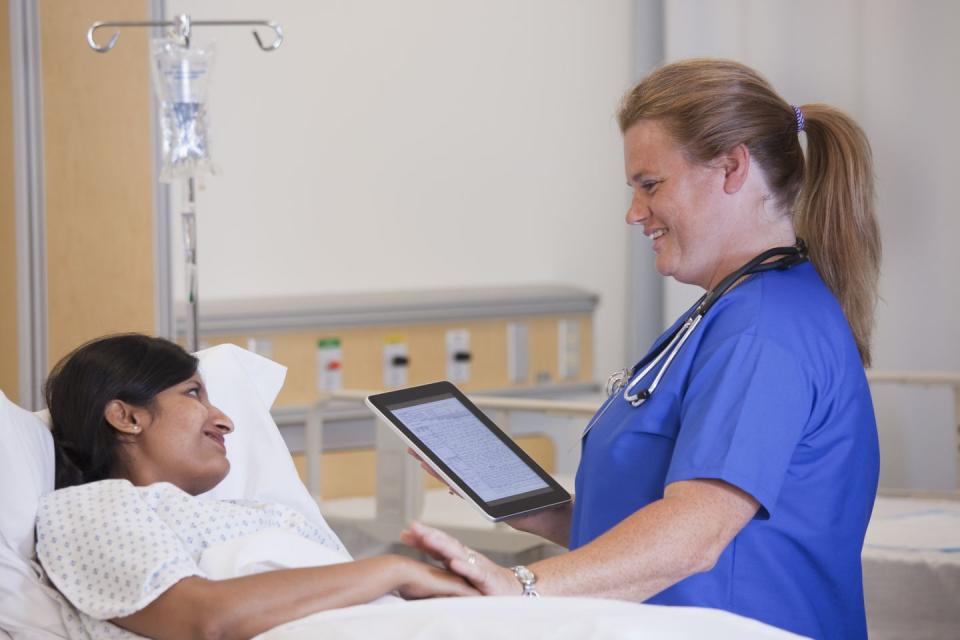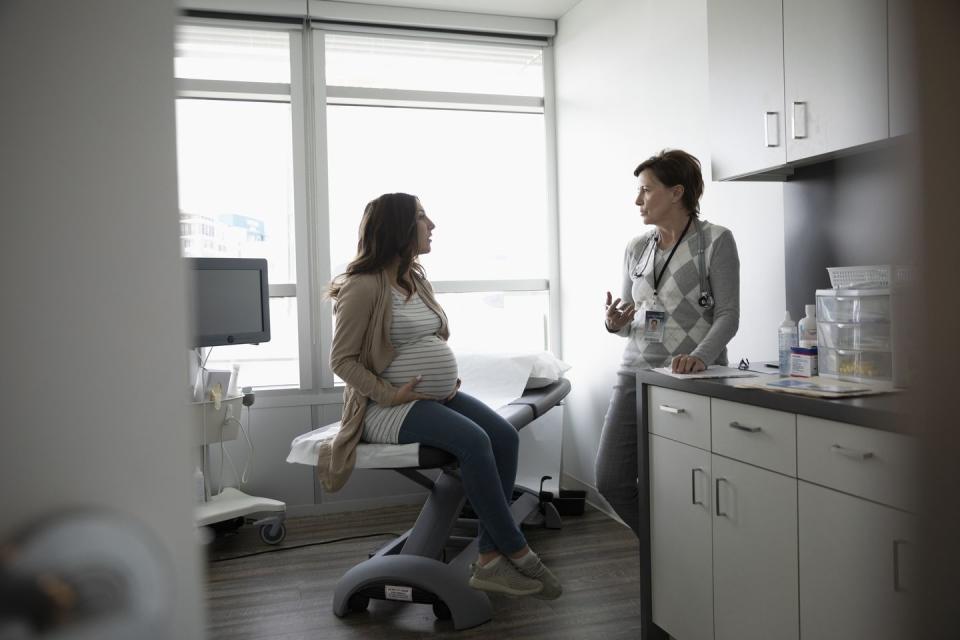There Are Scarily Few High Blood Pressure Symptoms for Women

There are many ways to measure health, but one stands out as a key to longevity and wellness: blood pressure. While it might seem like a trivial part of your yearly check-ups, the truth is that monitoring blood pressure gives you a quick and clear indicator of how your heart is doing.
First, the basics: Blood pressure is just a measurement of the pressure it takes for your heart to pump blood through your body. The biggest concern for most people, especially as they age, is high blood pressure. Also known as hypertension, high blood pressure is when the pressure stays high over significant time, according to the Centers for Disease Control (CDC).
High blood pressure can lead to a whole host of issues in the long term. Namely, it contributes to the leading causes of death in the US: heart disease and stroke.

You’re considered to have high blood pressure when your numbers reach 140/90, says Dr. Suhail Ahmad, professor of medicine at the University of Washington School of Medicine. But the good news, he adds, is that for all of the risk factors for cardiovascular problems, high blood pressure is the most treatable.
High blood pressure symptoms in women
“Hypertension has been called the ‘silent killer’ because it usually does not cause any symptoms but can be causing damage to the heart and blood vessels if left untreated,” says Dr. Erin D. Michos, MHS, associate director of preventive cardiology at Johns Hopkins School of Medicine.
You may have heard that nosebleeds or headaches are symptoms of high blood pressure, but most evidence suggests that’s not the case except for life-threatening episodes of high blood pressure, according to the American Heart Association.

That’s why it’s critical to monitor your blood pressure on a regular basis. You should have your blood pressure tested at least every two years as part of a routine doctor’s visit, according to the Mayo Clinic — and even children as young as three should be checked. After age 40, you should get yearly readings. If you’re diagnosed with high blood pressure or other risk factors, more frequent readings may be necessary.
Risk factors for high blood pressure in women
In general, the Mayo Clinic says the risk factors for high blood pressure include family history, race (people of African descent often develop hypertension at a younger age than white people), weight, lack of physical activity, tobacco use, excess sodium in the diet, too little potassium, and drinking too much alcohol.
Secondary hypertension, or high blood pressure related to an underlying disease, is also common. In these cases, hypertension usually comes on more suddenly and is higher than in the case of other risk factors.

“Generally speaking, incidence of hypertension is lower in women of pre-menopausal age than men of similar age,” says Dr. Ahmad. But there are situations where women are more susceptible to high blood pressure than men:
Pregnancy
Pre-menopausal women aren’t at any more risk for hypertension than men, unless that woman experienced high blood pressure during a pregnancy. “Even if blood pressure normalizes after delivery, these women are at much greater risk for subsequent development of hypertension, as well as also increased risk for heart disease, heart failure, and stroke,” Dr. Michos says. “Women with a history of hypertensive disorder during pregnancy need even closer monitoring.”
Birth Control
As the Cleveland Clinic explains, women who take birth control are at a higher risk of developing high blood pressure. The American College of Obstetricians and Gynecologists (ACOG) recommends women with high blood pressure don’t use the combined hormonal birth control options, which include the pill, the patch, and the ring, and that some women with high blood pressure should also avoid birth control injections.
Polycystic Ovarian Syndrome
The CDC notes that polycystic ovarian syndrome can also lead to high blood pressure, and the risk increases for women with the disease as they get older. It’s not entirely clear what causes the connection, but diet and exercise do help to mitigate the risk, according to Johns Hopkins Medicine.

Post-menopause
“After age 65 women seem to have higher risk of hypertension than younger age women and similar age men,” says Dr. Ahmad. Researchers are still trying to understand why, but it may the case that female hormones have a protective effect early in a woman’s life that is reduced when they age, he explains.
What you can do about high blood pressure
“Everyone should follow a heart healthy lifestyle to help keep BP optimal,” Dr. Michos says.
A heart healthy lifestyle includes:
Eating a diet rich in fruits and vegetables
Limiting salt intake
Regular physical activity
Maintaining a normal body weight
Reducing alcohol intake
Not smoking
The CDC also says that, in addition to lifestyle changes, some medications may be helpful in lowering blood pressure. Medications, however, come with side effects, and should be monitored as your blood pressure improves.
You Might Also Like

